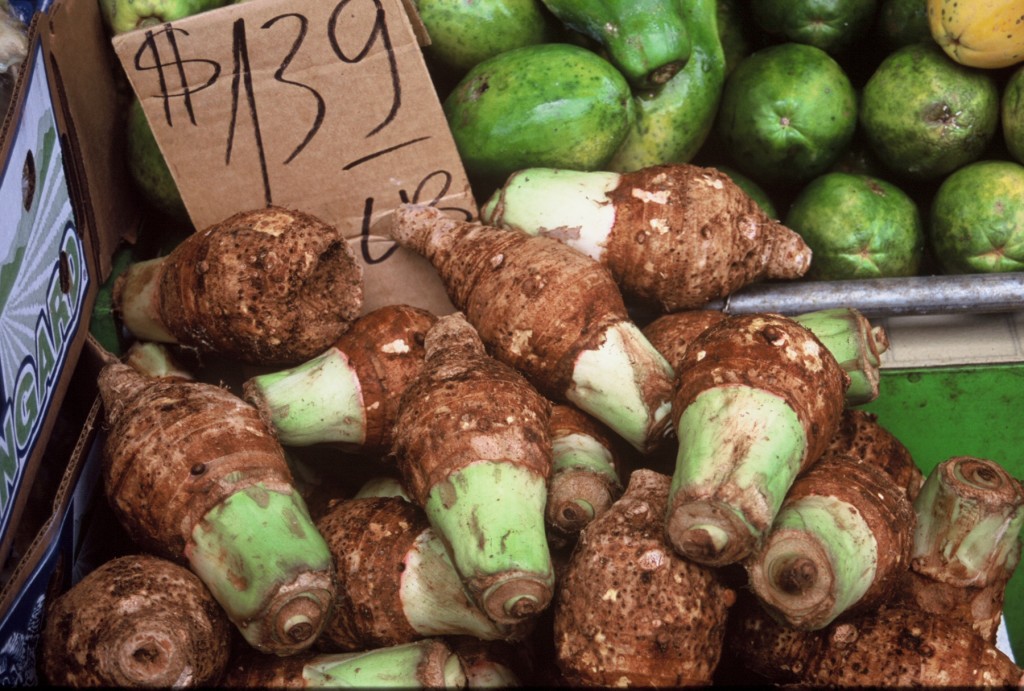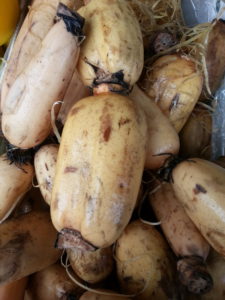Taro/gabi

Taro -gabi (Colocasia Esculenta) is the most widely cultivated among root vegetables. It is the Hawaiian’s staple food and they call it “kalo”. Taro or “kalo” has a more deep connection with the Hawaiians. They preferred taro over sweet potato although taro required more time and labor to grow. They cook the taro and pound it into po’i and it will keep indefinitely. The Hawaiians grow two kinds of taro, wet and dry taros. For the wet taro, they will build a terrace or lo’i using mud and sugar cane and coconut leaves as reinforcement. The water from the nearby stream will then be diverted into the lo’i opening the area where the water should go and flood the whole terrace. The dry land taro are grown where there is no water source nearby. But plantings are done close to the rainy season.
Depending on conditions, taro will mature within nine to twelve months. There are indications when it is ready to be harvested like when the leaves turn yellow or curl. You can plant a whole corm for starters, that is what I did with my taro or gabi plants. But for commercial farmers, they chopped off the leaves and cut the corm from the hull. The top portion of the hull is the one being replanted.
I like to have taro plants in my garden as standby in case I want to make the famous Filipino recipe called “laing”. It is a popular dish and originated in the Bicol province because of it’s spiciness. Bicol region in the Philippines is famous for dishes using “siling labuyo” or wild chili peppers in almost all their everyday dishes including the “laing”. “Laing” is made of primarily leaves and stems of the taro but you can include the roots too. After the preparations, boil everything in coconut milk with ginger and hot chili peppers. You may put pork or chicken in it but the traditional way of making “laing” in the Philippines is using dried fish as the protein.
The Hawaiians use the leaves in making the famous “Lau Lau”. The leaves are steamed to become pliable and then use either pork or chicken as filling and top with fish. The meat is the enclosed with the leaves and sealed with Ti leaves or aluminum foil.
Taro is starch rich plant that makes it important as a food source not only to the Hawaiians but in other parts of the world. Another name for it is “dasheen”.
The picture I have here was taken in an Australian farmer’s market when I visited some years ago. I was actually surprised to see taro there but I figure where there is Filipinos, there will be taros, or “gabi”.
